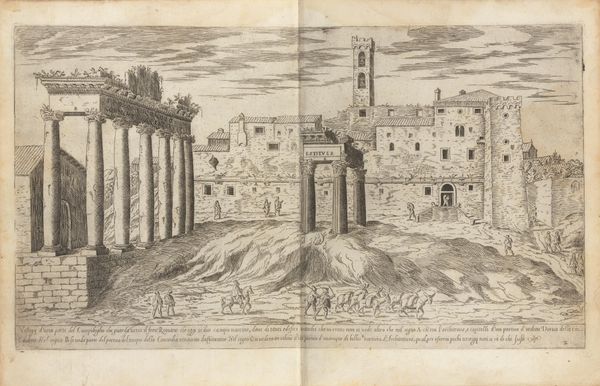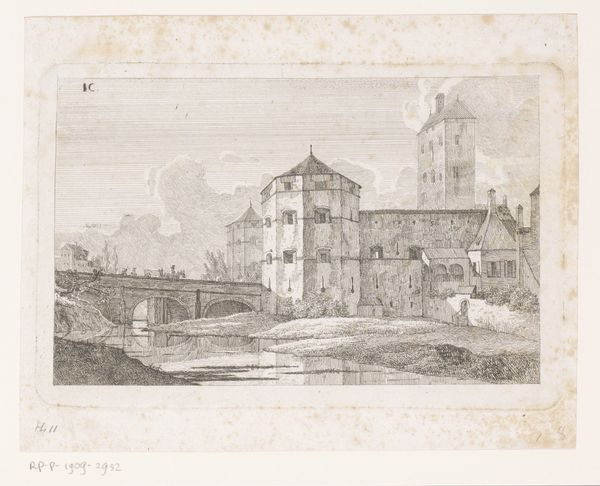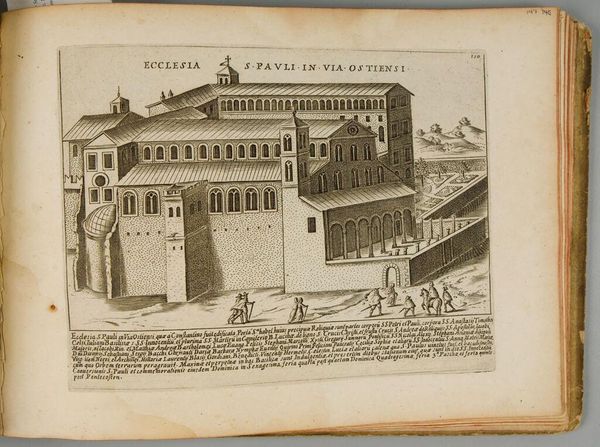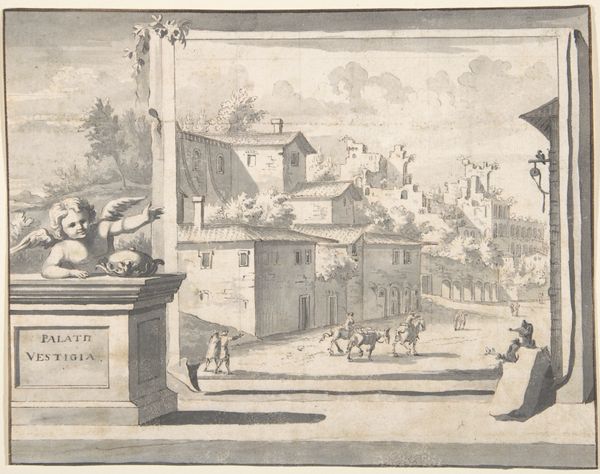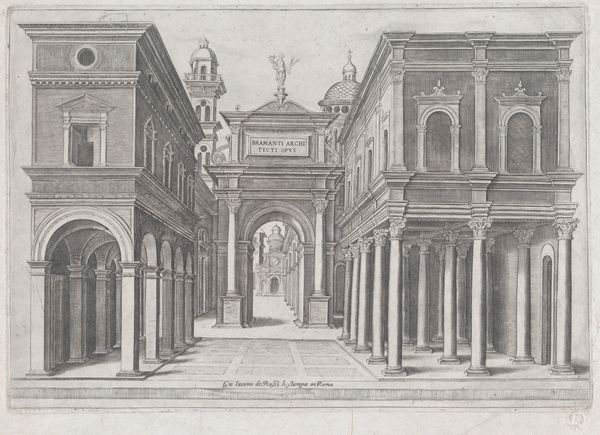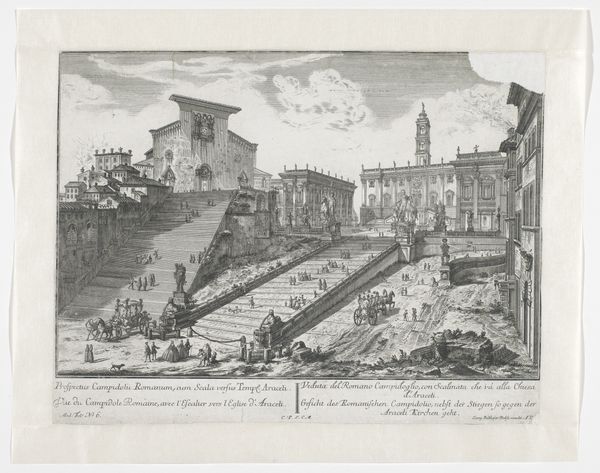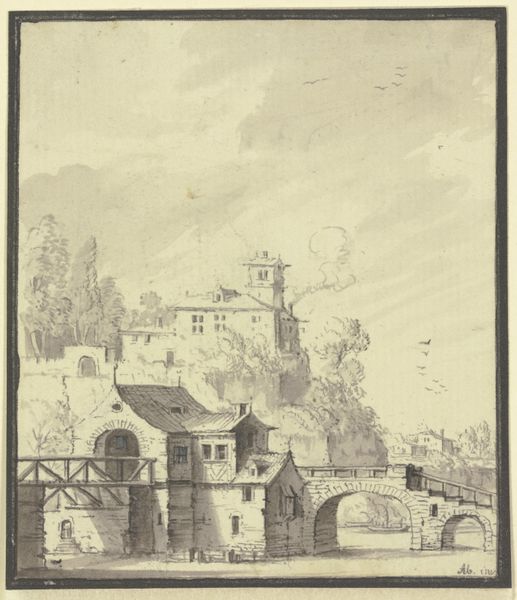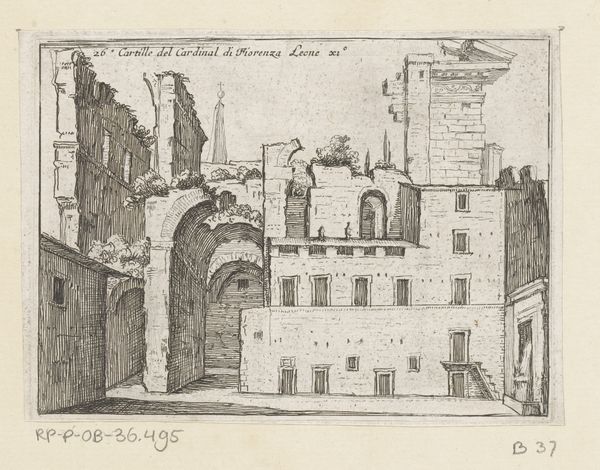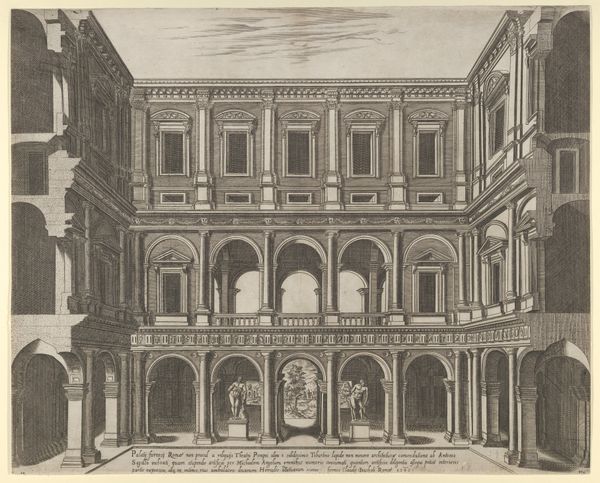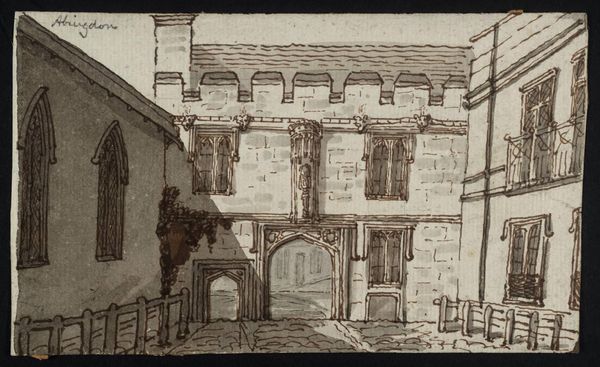
View of the Capitoline Hill during Michelangelo's restoration, the equestrian monument of Marcus Aurelius in the centre from the 'Speculum Romanae Magnificentiae:' 1556 - 1566
0:00
0:00
drawing, print, sculpture, engraving, architecture
#
drawing
# print
#
perspective
#
sculpture
#
italian-renaissance
#
engraving
#
architecture
Dimensions: Mount: 18 1/8 × 22 1/16 in. (46 × 56 cm) Sheet: 17 1/4 × 21 1/4 in. (43.8 × 54 cm)
Copyright: Public Domain
This print, part of a series titled 'Speculum Romanae Magnificentiae,' captures the Capitoline Hill in Rome during Michelangelo's restoration. It was made using the technique of engraving, where an image is incised into a metal plate, which is then inked and printed. Consider the labour involved in this process. Each line was painstakingly cut by hand using a burin. The crisp, precise lines and intricate details demonstrate the engraver's skill and control over the medium. Note how the parallel lines create a sense of depth and volume, particularly in the architecture and the equestrian monument of Marcus Aurelius. Prints like this one played a vital role in disseminating knowledge about classical antiquity and Renaissance art. They served as a form of visual documentation, allowing viewers to study and appreciate these landmarks from afar. The circulation of these images contributed to the development of a shared visual culture and fueled the Renaissance fascination with classical forms. Paying attention to the materials and the making of an artwork allows us to reflect on the historical context, the labor involved, and the wider cultural significance of the piece.
Comments
No comments
Be the first to comment and join the conversation on the ultimate creative platform.
